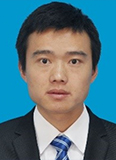

Prof. Xinwu

Prof.Xinwu
Sun Yat-sen University
Research Area
2D material, additive manufacturing, corrosion
Brief introduction of your research experience:
Dr. Xin Wu is an Associate Professor at Sun Yat-Sen University in Zhuhai, Guangdong, China. He obtained his undergraduate degree in Materials Science and Engineering (2010) from Huazhong University of Science and Technology in Wuhan. Wu received his Ph.D in Materials Science and Engineering from Tsinghua University in Beijing in 2016 under the supervision of Professor Haiyan Zhao. Then Dr. Wu joined CWJRC as a postdoctoral fellow at Colorado School of Mines in Golden, Colorado (2016-2018, Professor Zhenzhen Yu Supervisor), followed by another postdoctoral experience at University of Cincinnati under the supervision of Professor Jing Shi (2019-2020). Wu was appointed to the School of Chemical Engineering and Technology at Sun Yat-Sen University from June 2020 as an Associate Professor.
Current research in the Wu lab emphasizes the use of computational materials approaches (FEM, MD, DFT, etc.) and microstructural characterization techniques (XRD, XPS, SEM, TEM, etc.) to: 1) study residual stress in the weldment under multi-pass condition and the control of residual stress in powder bed-based metal additive manufacturing; 2) determine the influence of residual stress, microstructure and corrosive environment on the corrosion degradation behavior of additively manufactured and welded workpieces; 3) nanowelding/nanojoining of the materials such as graphene, MoS2.
Speech Title
Modulation of the structure and properties of 2D materials and vdW heterostructures by ion beam irradiation
Abstract
2 dimensional (2D) materials such as graphene have extrodinary properties and significant application potential. The vdW heterostructures made by vertically stacking different 2D materials further opens up the new era of 2D materials. To realize the numerious application potential, it is needed to modulate the structure and properties of these 2D materials and their related heterostructures, for which ion beam irradiation has obvious advantages. This research mainly adopted atomistic simulation to study the sputtering of atoms in 2D materials, defect formation and the control rule, nanopore fabrication, joining of 2D materials, interlayer distance adjustment of vdW heterostructure under ion beam irradiation, considering the influence of ion irradiation parameters (ion beam energy, ion dose, irradiation angle, etc.), layer number of 2D materials, stacking sequence, substrate. Furthermore, the mechanical and electrical performance of the ion-irradiated nanostructures were investigated for actual applications. This research could provide important theoretical support for fabricating high-performance 2D materials and heterostructures-based nanodevices by ion beam irradiation method.
